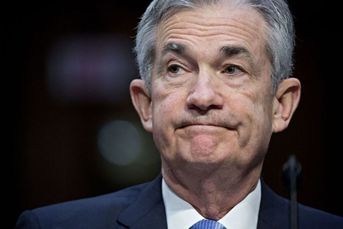Regulatory change could bring ‘thousands’ of new ETFs

A number of other asset managers have asked the SEC to allow them to replicate the fund model, used exclusively by Vanguard for more than two decades, that lets an ETF be listed as a share class of a broader mutual fund.
Outside the Fontainebleau Hotel in Miami, Florida, last week, dozens of drones moved slowly through the night sky, projecting the bitcoin symbol far and wide above one of the largest ETF gatherings of the year.
But inside the annual Exchange conference, industry insiders were obsessing over an event that could prove a far bigger deal for the $8.4 trillion business than the long-awaited launch of spot bitcoin ETFs: regulatory approval of new share-class structures.
It’s arcane stuff compared to the boom-crash-boom of crypto — no one ever launched drones to celebrate different investor classes, as Grayscale Investments did for its $23 billion bitcoin fund. But the question of whether the Securities and Exchange Commission will allow firms to replicate the fund model used exclusively by Vanguard Group for more than two decades was the hot topic among the industry professionals in attendance.
For good reason. That structure would permit an ETF to be listed as a share class of a broader mutual fund — effectively bringing the famous tax efficiency of the exchange-traded fund to the whole vehicle. Vanguard’s patent that prevented copycat funds expired in May. Now, the only barrier is SEC approval.
“While spot Bitcoin ETFs are currently dominating the headlines, those products are simply a sideshow compared to the potential impact of the multi share class structure,” said Nate Geraci, president of The ETF Store, an advisory firm.
Heavyweights including Fidelity, Morgan Stanley and Dimensional Fund Advisors have all asked the regulator for permission to use the model, which could port the tax advantages of ETFs onto trillions of dollars of mutual fund assets. It’s a tantalizing prospect for an industry looking for the next wave of growth after quadrupling in size over the past decade. There are already more than 3,300 US-listed ETFs, and SEC approval could open the floodgates to thousands more.
“If the SEC allows for share classes, especially for active mutual funds, I think it’s huge for the ETF industry,” said Michael Venuto, chief investment officer at Tidal Financial Group. “There’s 10,000 mutual funds. The idea that 20% of them would add an ETF share class doesn’t seem insane to me.”
Mutual funds have largely bled assets in recent years as ETFs have grown in popularity. As a result, legacy asset managers have found themselves battling for a slice of the increasingly saturated ETF market. In Miami, every conference attendee received a gift bag stuffed with swag from the likes of T. Rowe Price and Matthews Asia. The tote itself carried the Federated Hermes logo.
Against that backdrop, Lara Crigger of data provider VettaFi says it’s obvious why mutual fund managers want the multi-share class structure.
“If they can launch ETFs as a share class of their existing mutual funds, then the mutual fund can use the ETF’s creation/redemption mechanism to get rid of the shares in its share portfolio with higher potential cap gains,” Crigger dsof. Fund investors will get the added tax efficiency without needing to switch to another product, she said.
There’s no deadline by which the SEC must make a decision, and no guarantee the watchdog will green-light further use of the structure. Since approving it for Vanguard years ago, regulators have expressed concern about conflicts of interest between mutual fund and ETF investors.
Conference attendees also speculated that the SEC may want to resolve its proposed rule changes around “swing pricing” — a liquidity mechanism based on a fund’s structure and objective — before acting on the applications to emulate the Vanguard approach.
Issuers are likely to keep up the pressure. While ETFs have been winning the popularity contest among investors for years now, mutual funds retain a few advantages, such as their key role in the US retirement system. Being able to launch an ETF share class of an existing mutual fund instead of completely changing the structure would give an issuer the best of both worlds, according to the New York Stock Exchange’s Douglas Yones.
“If the SEC gives its blessing to the hybrid structures, it’s not hundreds of ETFs that could enter the marketplace,” said Yones, NYSE’s head of ETF products. “It’s thousands.”
Tony Robbins explains how to profit from real estate, energy and sports teams
Learn more about reprints and licensing for this article.








